Moroccan Cuisine & Food Tours
Discover Morocco’s culinary culture, best dishes, and food experiences.
I knew I was tasting home when I first bit into a steaming tagine in my grandmother’s Marrakech kitchen. The lamb was so tender and seasoned with cumin and preserved lemon that it melted in my mouth. My passion for Moroccan cuisine—a diverse blend of flavours influenced by Berber, Arab, and Mediterranean cultures—was ignited by that event decades ago. As a native of Marrakech who has visited Morocco’s coastal towns, riads, and souks, I have enjoyed everything from delicate Moroccan sweets and desserts to street-side Moroccan bread. Come on a culinary tour of Morocco’s towns and cities, where each dish has a backstory and each bite serves as a chance to get to know the country’s spirit. This guide will help you experience Morocco like a local, whether you dream of cooking with a Berber family in the Atlas Mountains, going on a food tour in Fes, or learning more about halal dining in Morocco.
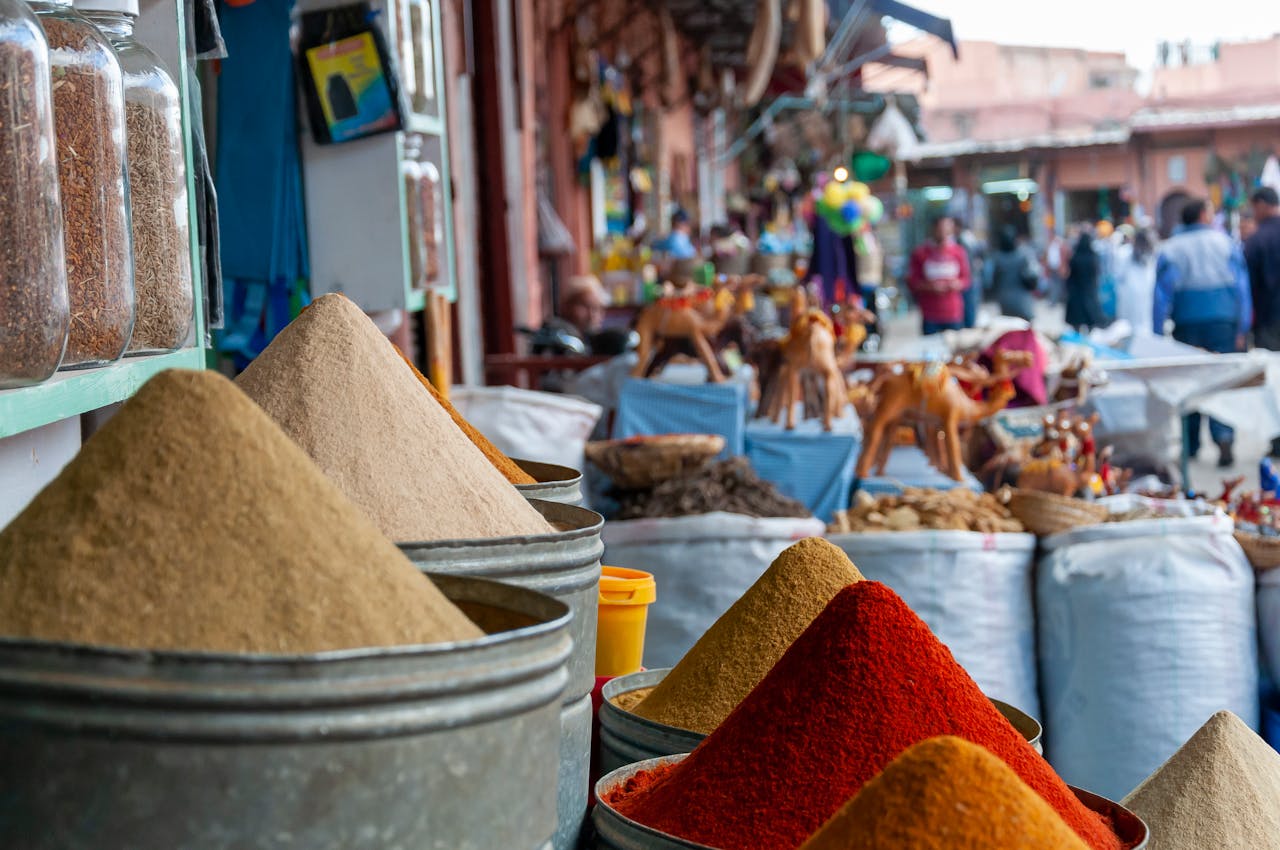
The history of Moroccan cuisine is a delicious patchwork. Berber tribes laid the foundation with hearty staples like tagine and couscous, while Arab traders brought spices like cinnamon and saffron. The Andalusian Moors contributed almonds and dried fruits, while French colonial influences brought pastries. Every dish today is flavoured by the spices my mother told me about her ancestors trading along the Sahara routes. Cultural blending has resulted in different regional cuisines in Morocco’s north and south; southern cities like Zagora prefer intense, earthy flavours, while northern cities like Fes serve more sophisticated, spiced cuisine. Gaining insight into this past enhances your enjoyment of each bite.

Morocco’s culinary heart beats in its dishes. Here are the top 10 traditional Moroccan dishes to try:
- Tagine: Slow-cooked stews named after the conical clay pot they’re cooked in. Try chicken with Moroccan pickles and preserved lemons or lamb with prunes. My favorite is a vegetable tagine in Essaouira, bursting with zucchini and saffron.
- Couscous: Steamed semolina grains served with meat or vegetables. What is the local way to eat couscous? Use your right hand, form a ball, and pop it in your mouth—my kids giggle every time I teach them this.
- Pastilla: A sweet-savory pigeon or chicken pie dusted with powdered sugar. Fes is the place to try it, especially at the best tagine restaurant in Morocco, like Palais Amani.
- Harira: A soul-warming soup of lentils, chickpeas, and tomatoes, often served during Moroccan food for Ramadan. I savored it at a Tangier street stall, the steam warming my hands.
- Rfissa: Shredded pancakes topped with chicken and lentils, a postpartum dish in my family’s tradition. It’s comfort food at its finest.
- Mechoui: Slow-roasted lamb, tender and smoky. I once shared a plate at a street food market you must visit in Meknes, the meat falling off the bone.
- Zaalouk: Smoky eggplant salad with tomatoes and spices. This dish pairs perfectly with Moroccan bread.
- B’stilla de poisson: A coastal twist on pastilla, stuffed with fish. Try it in seafood specialties from Moroccan coastal towns like Essaouira.
- Kefta: Spiced meatballs in a tomato sauce, a street food favorite for exploring Moroccan street food in Marrakech.
- Chebakia: Honey-soaked sesame cookies, a star of Moroccan sweets and desserts, especially during Ramadan.
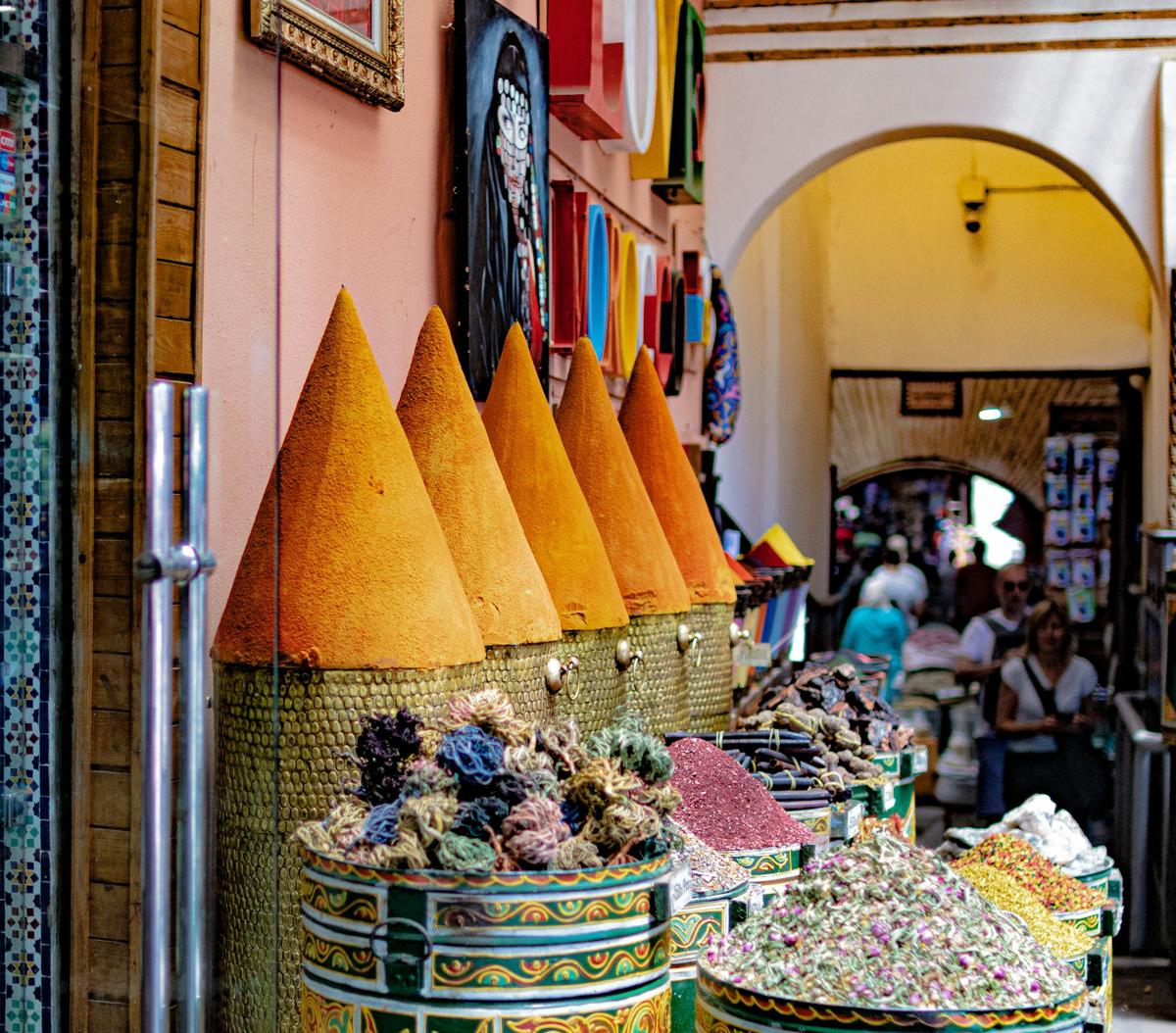
Understanding the essence of Moroccan cuisine requires a beginner’s guide to spices. The golden color of saffron gives tagines depth. Ras el hanout, a mixture of up to 30 spices, is Morocco’s secret weapon, while cumin adds earthy warmth. I once observed a spice vendor grinding ras el hanout in the heady scent of Jemaa el-Fnaa in Marrakech.
Are you shopping for Moroccan ingredients abroad? Look for these online at stores like Kalustyan’s or in Middle Eastern markets.
Pro tip: My aunt in Fes taught me to lightly toast spices before cooking to bring out their flavors.
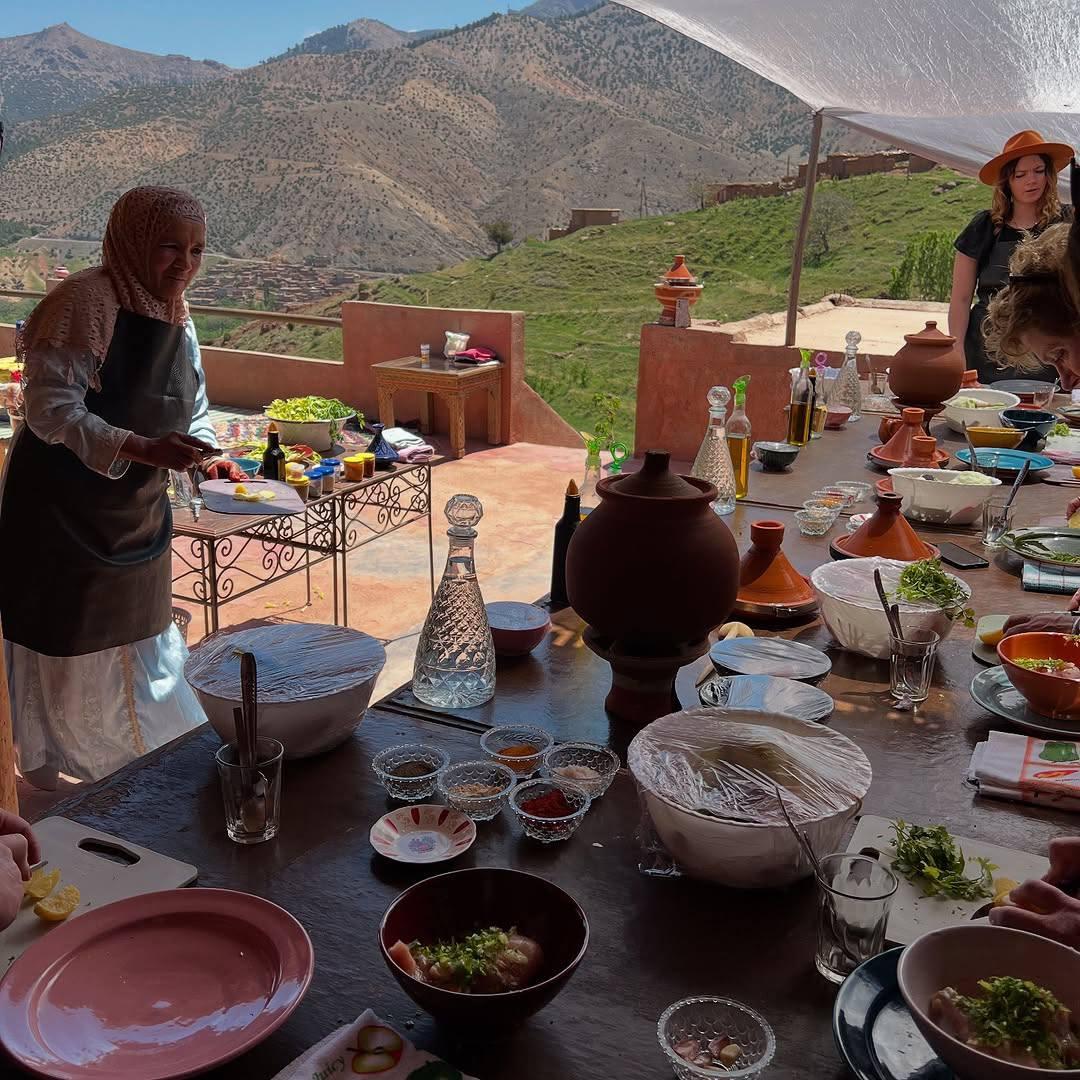
For hands-on learning, the best cooking classes in Marrakech are a must. At La Maison Arabe, I kneaded dough for Moroccan bread and stirred a chicken tagine under a chef’s guidance. Classes at Faim d’Epices or Souk Cuisine take you to markets to pick fresh ingredients, teaching you to haggle like a local. Expect to spend 3-4 hours, with prices from $50-$100. Cooking with argan oil: recipes and tips is often included—try drizzling it over amlou, a nutty dip. These classes suit beginners and foodies alike, blending culture and cuisine.
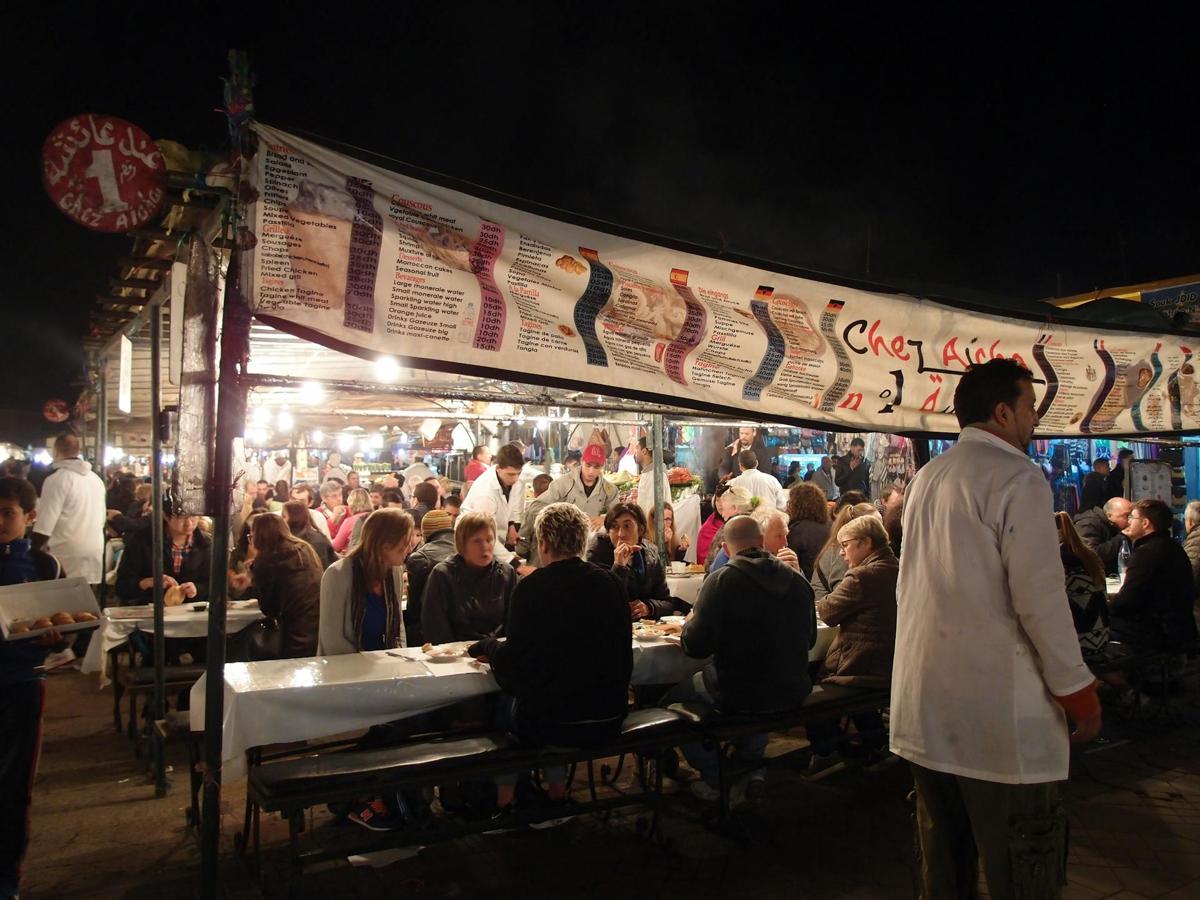
It’s an adventure to try Moroccan street food. Snail soup, a surprisingly tasty specialty, and kefta skewers are the main attractions at the Jemaa el-Fnaa in Marrakech. While locals conversed around me, I once sampled Moroccan stews and soups at a Tangier stall while slurping harira. Where should I eat: at restaurants or street vendors? While restaurants offer comfort and variety, vendors offer authenticity and affordability ($1–$5 per dish). You should not miss two street food markets: Place el-Hedim in Meknes for mechoui and Djemaa el-Khadra in Casablanca for grilled sardines. Here are the dos and don’ts of Moroccan food etiquette: use your right hand when eating, accept tea politely, and take your time.
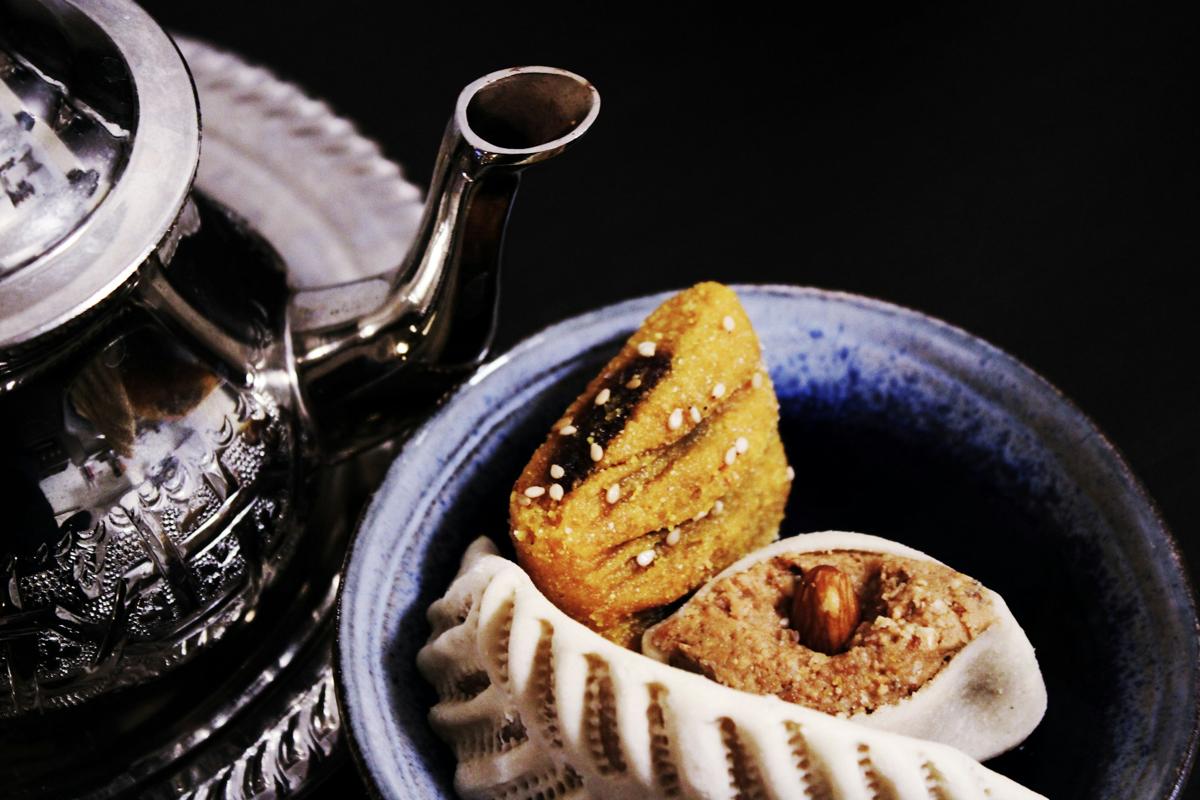
Food tours, which offer a culinary adventure, are among Fes’s highlights. Amidst its nine thousand lanes, Fes’s medina conceals treasures such as Café Clock, where I sampled a surprisingly tender camel burger. Make a plan. Morocco provides tours that meander through souks while enjoying Moroccan breakfast, which consists of the locals’ favorite dishes (think honeyed msemen pancakes), as well as Moroccan sweets and desserts like gazelle horns. I visited a local home during a half-day tour of Fes to learn how to make couscous like a local by rolling the grains by hand into balls. Spend between $30 and $60 on a three- to four-hour tour that includes tastings. Vegetable tagine and bessara, a fava bean soup, are just two examples of the many vegan and vegetarian Moroccan dishes that are available on these tours. Make reservations with businesses like Fes Food Tours for authenticity.
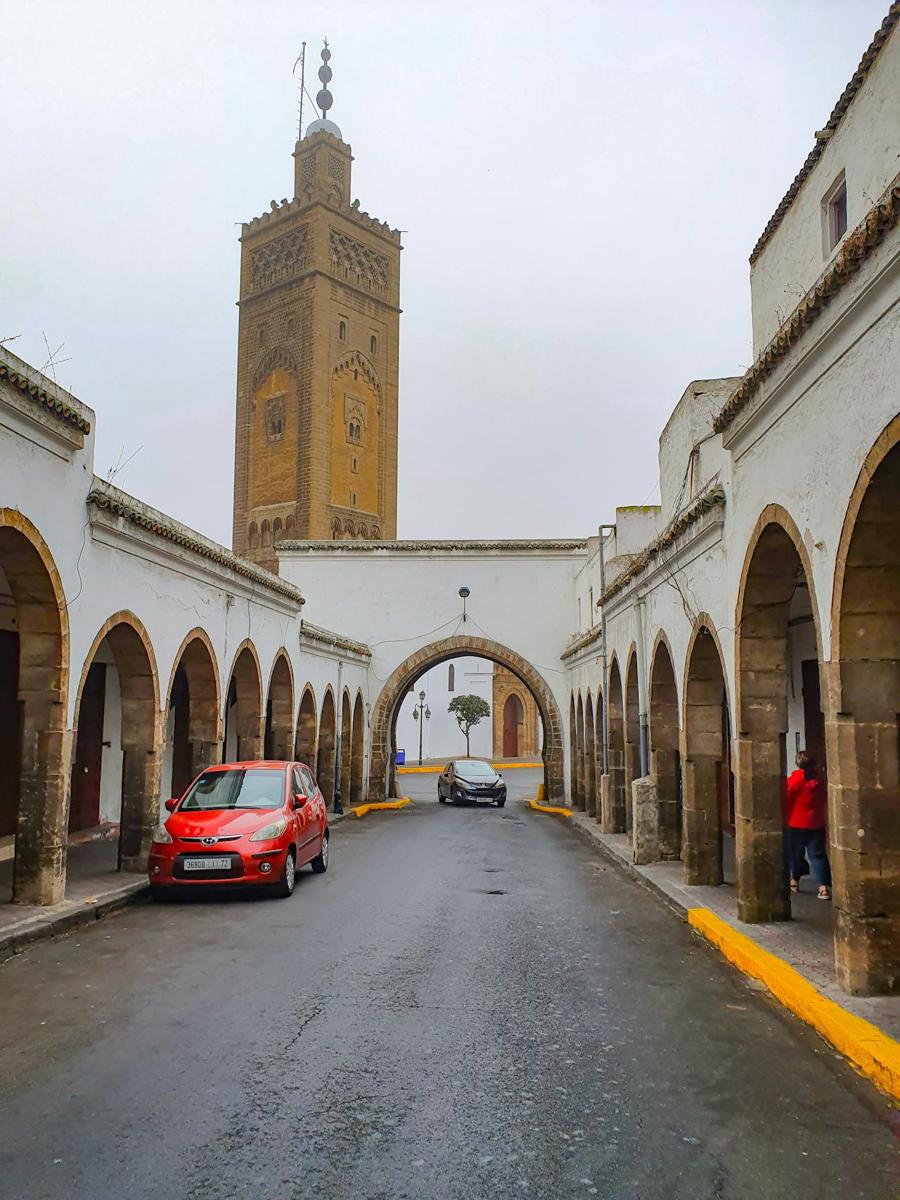
Casablanca’s culinary diversity is showcased by its hidden culinary treasures. Nestled in the Old Medina, Le Cuisto Traditionnel serves lamb tagine with preserved lemons and Moroccan pickles—a flavour explosion I still dream about. Located in a fortress, La Sqala serves seafood specialties from coastal towns in Morocco, such as shrimp pastilla. Try the grilled fish sandwiches from the street vendors along the Corniche for a less expensive option. In Morocco, halal food is commonplace, with the majority of eateries following Islamic dietary regulations. For high-end restaurants, reservations are advised, particularly during Moroccan food festivals and occasions such as the Casablanca Seafood Festival.

Moroccan breakfast: what locals eat is a daily ritual. My mornings often start with Moroccan bread—khobz or baghrir (semolina pancakes)—slathered with amlou or honey. Beghrir, spongy and drizzled with butter, is a kids’ favorite in my house. Pair it with the art of Moroccan tea, poured high to aerate the minty brew. Street cafés in Rabat serve msemen, a flaky flatbread, with boiled eggs and olives. For vegan and vegetarian food in Morocco, try avocado smoothies or chickpea stew. Visit a local café like Café Maure in Rabat’s Kasbah for an authentic spread.

The best tagine restaurants in Morocco elevate this iconic dish. In Marrakech, Al Fassia’s all-female staff serves a chicken tagine with caramelized onions that left me speechless. In Fes, Restaurant Dar Hatim offers home-cooked vegetable tagines in a riad setting. Casablanca’s La Taverne du Dauphin serves a seafood tagine alongside other dishes. Expect to spend $10 to $25 per person. Moroccan food etiquette: dos and don’ts—share communal dishes, scoop with bread, and never point your fork at others.

Moroccan sweets and desserts are a sugar lover’s dream. Chebakia, sesame cookies soaked in honey, are Ramadan staples. I once shared a plate with a Berber family in the Atlas Mountains, their warmth as sweet as the dessert. Gazelle horns, almond-filled pastries, pair perfectly with mint tea. Try kaab el ghzal at Patisserie Bennis in Fes’s medina. For vegan and vegetarian food in Morocco, opt for fruit-based desserts like orange slices with cinnamon. Moroccan food festivals and events, like the Tangier Date Festival, showcase these treats.

In places like Essaouira, where I enjoyed grilled sardines by the port with the sea breeze in my hair, the Moroccan coastal towns’ seafood specialities are the highlight. Fresh oysters served with lemon are a delicacy from Oualidia. Try Moroccan stews and soups in Agadir, such as the fish soup from Le Nil Bleu with bouillabaisse influences. Essaouira’s fish market is a must-visit street food market if you want to experience a raw bar atmosphere. All can enjoy these coastal treasures because halal dining in Morocco guarantees that seafood is prepared in accordance with Islamic standards.

Must-try Moroccan soups and stews warm the soul. Harira, a tomato-based lentil soup, is a Ramadan tradition, often paired with chebakia. I sipped it at a Fes stall during iftar, the communal vibe unforgettable. Bessara, a creamy fava bean soup, is a staple vegan and vegetarian food in Morocco, served with olive oil and cumin. Try lentil stew in Rabat’s medina for a hearty lunch. Moroccan food glossary for travellers: “Harira” means “silky,” describing its texture perfectly.
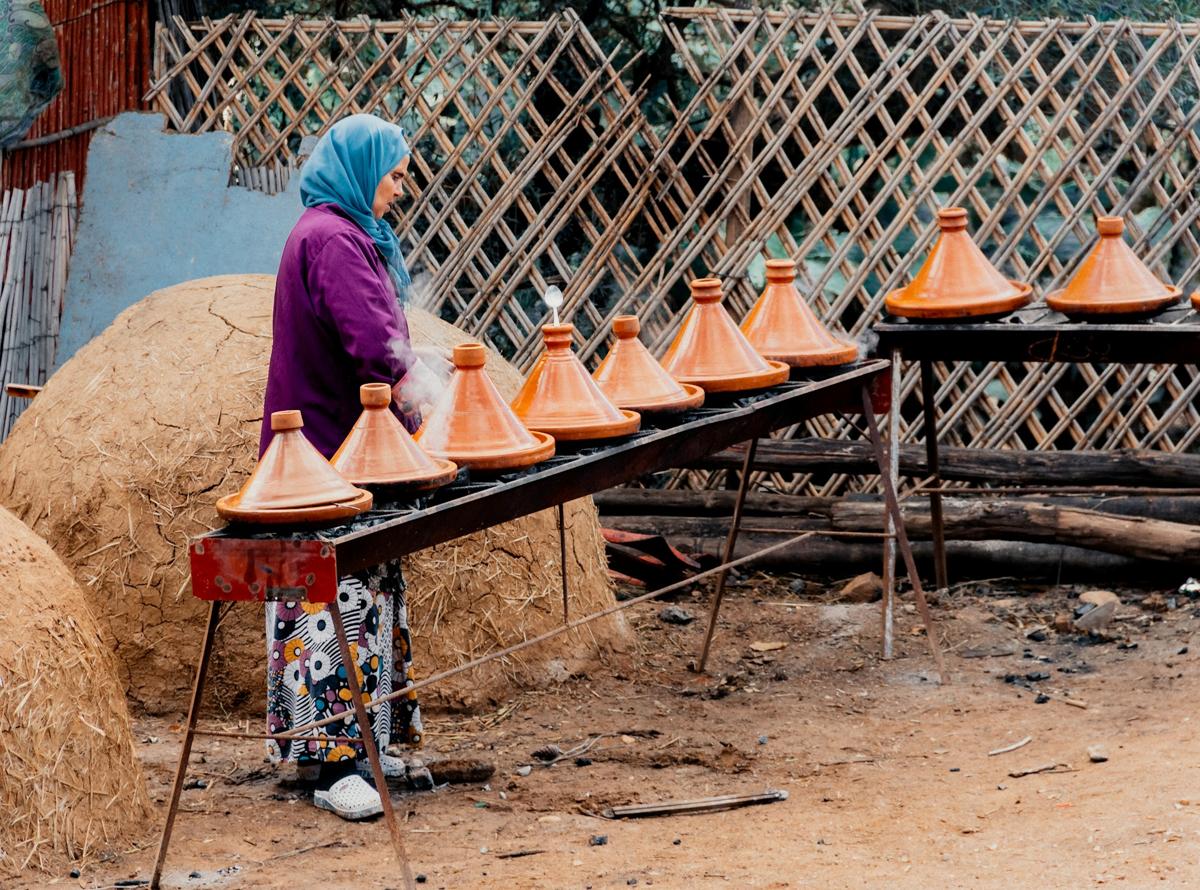
Cooking with a Berber family in the Atlas Mountains is a cultural immersion. In the Ourika Valley, I joined a family to make tagine, chopping vegetables on a low table while goats bleated nearby. They taught me cooking with argan oil: recipes and tips—a nutty drizzle elevates couscous. Classes, often arranged through riads or tour operators, cost $40–80 and include market visits. Moroccan food etiquette: dos and don’ts—eat from the communal dish’s edge, not the centre, to respect others.
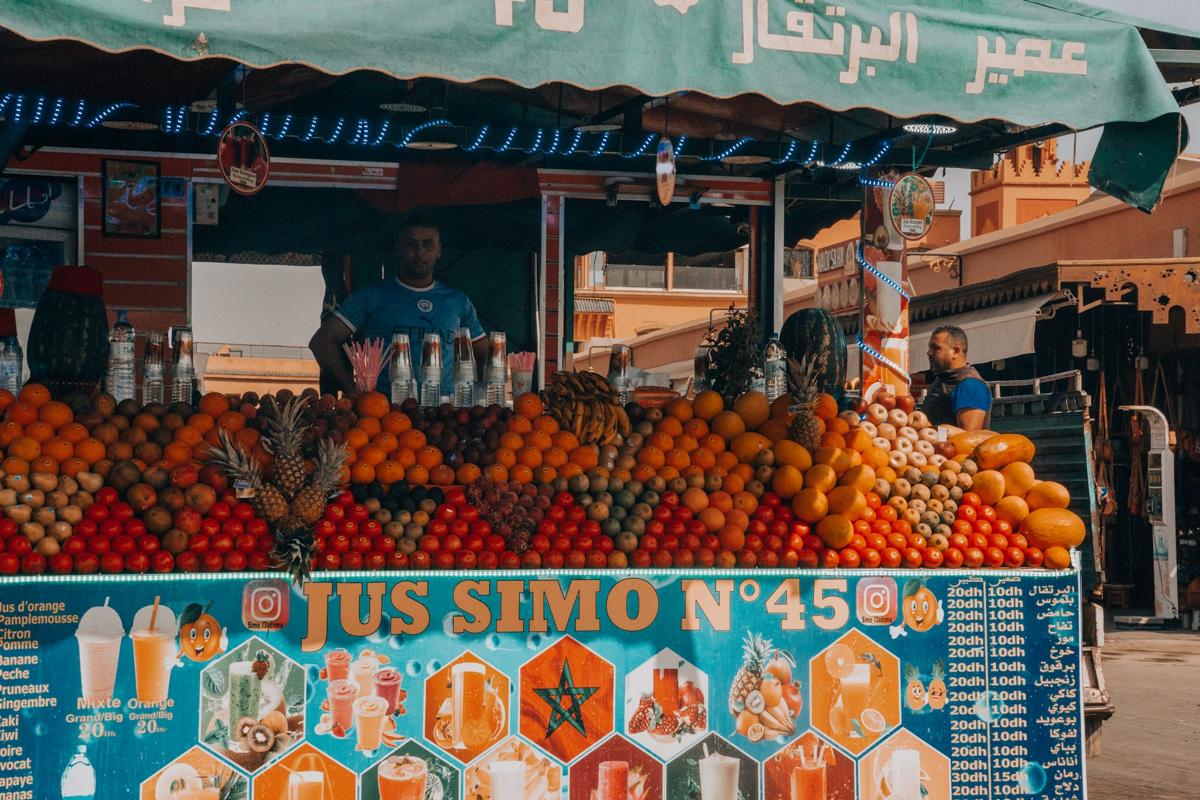
Where should I eat: at restaurants or from street vendors? Quick and inexpensive snacks are available from vendors; consider Moroccan street food, such as kefta wraps ($2-$4). In Casablanca’s medina, I snatched up a fiery merguez sandwich; the flavors were strong and crisp. With multi-course meals ranging from $15 to $30, restaurants such as Le Ziryab in Rabat offer ambiance and variety. While vendors frequently have hidden culinary treasures in Casablanca, restaurants are better suited for leisurely, longer meals. Moroccan culinary celebrations, such as the Fes Culinary Festival, combine two cultures.

Moroccan food for Ramadan centres on breaking the fast. Harira and chebakia are iftar staples, followed by dates and milk. I joined a Ramadan meal in my Marrakech neighbourhood, the table overflowing with Moroccan sweets and desserts. Moroccan soups and stews like lamb harira sustain fasters through the night. Street markets come alive post-sunset with street food markets you must visit, offering everything from gazelle horns to grilled kefta.

Moroccan pickles and preserved lemons add zing to dishes. Preserved lemons, salted and fermented, brighten tagines—I learned to make them in the best cooking class in Marrakech. Pickled carrots, turnips, and chillies accompany street food, adding crunch. When shopping for Moroccan ingredients abroad, look for preserved lemons at Mediterranean markets or make your own with salt and time. For travelers, the Moroccan food glossary includes the term “M’shermel,” which means pickled and is commonly heard in souks.

Vegan and vegetarian food in Morocco is surprisingly abundant. Zaalouk, bessara, and vegetable couscous are staples, often served at food tours in Fes. I enjoyed a vegan tagine at Café Clock, packed with pumpkin and chickpeas. Moroccan breakfast offers vegan-friendly baghrir with honey. Street vendors vs restaurants—vendors sell quick veggie snacks, while restaurants like Le Jardin in Marrakech specialise in plant-based menus. Eco-friendly dining in Morocco emphasises local, seasonal produce.

Morocco’s eco-friendly restaurants promote sustainability. Local ingredients are used to make Moroccan soups and stews at restaurants like the women’s cooperative Amal in Marrakech. I knew it helped the community when I ate there and enjoyed a carrot soup straight from the farm. Argan oil and organic spices are sold in desert markets and souvenir shops. When purchasing Moroccan ingredients overseas, opt for fair-trade companies such as Al Amal. Events and food festivals in Morocco, such as the Agadir Argan Festival, frequently showcase sustainable practices.

A day of eating in Marrakech is a feast. Start with Moroccan breakfast at Café des Épices—msemen, eggs, and the art of Moroccan tea. Lunch at a Jemaa el-Fnaa stall with exploring Moroccan street food like kefta tagine. Snack on Moroccan sweets and desserts—almond briouats from a souk vendor. Dinner at Dar Yacout, the best tagine restaurant in Morocco, with chicken pastilla under lantern-lit ceilings. Moroccan food etiquette: dos and don’ts—pace yourself, as portions are generous.
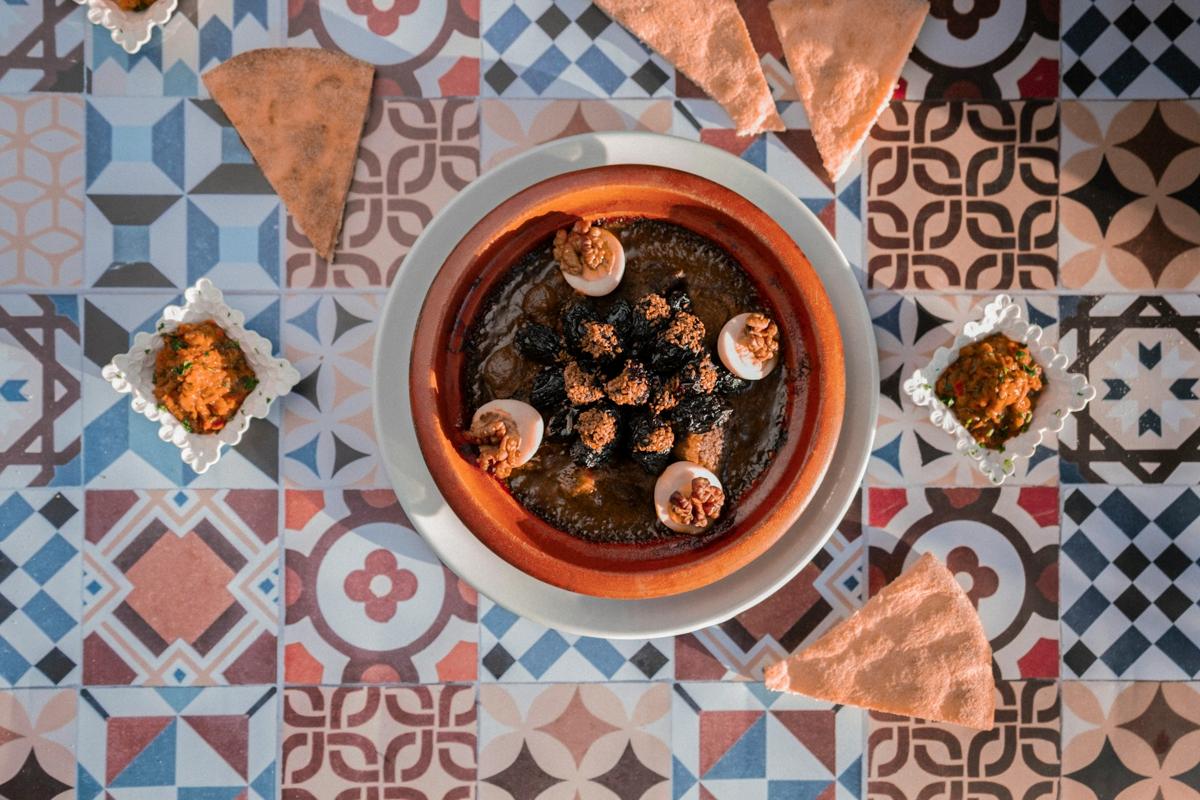
The regional cuisine of North and South differs significantly. Morocco is a diverse country. Influenced by Andalusian elegance, Northern Fes and Tangier prefer delicate seafood and pastillas. Hearty tagines and sand-oven-baked Moroccan bread are popular in southern Marrakech and Zagora. A Zagora lamb tagine was richer and smokier than Fes’s more elegant versions, and I could taste the difference. The north of Morocco is dominated by seafood specialities from coastal towns, while the south offers dates and almonds at desert markets and souvenir shops.
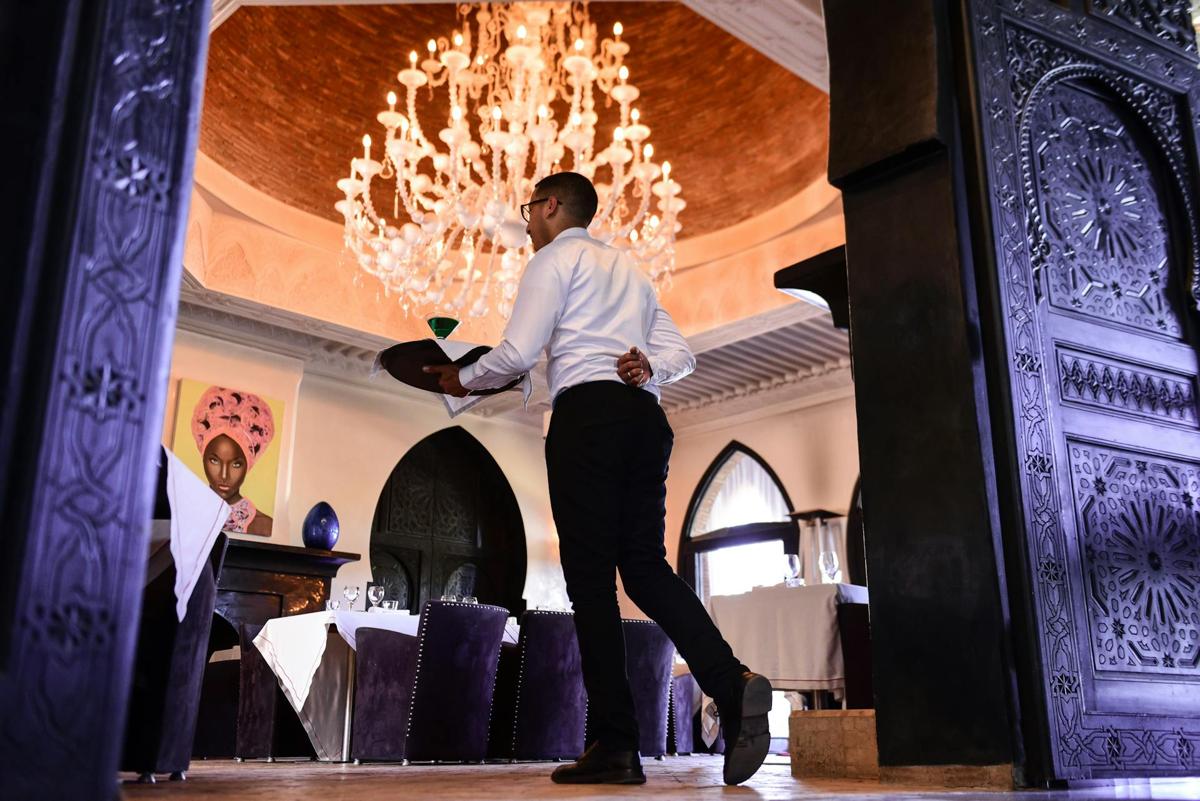
Food festivals and events celebrate Moroccan culinary heritage. Live cooking demonstrations and food tours around Fes are part of the springtime Fes Culinary Festival. I went to one where I tasted Moroccan stews and soups prepared by famous chefs. Agadir’s Argan Festival features cooking with argan oil, while the Tangier Date Festival highlights Moroccan sweets and desserts. Spices and preserves are sold at these events, dessert markets and souvenir shops. For convenient dates, check the local tourism boards.

Moroccan food glossary for travellers:
Briouat: Stuffed pastry triangles.
This glossary helps navigate menus and markets, especially for vegan and vegetarian food in Morocco
- Tagine: Clay pot stew.
- Couscous: Steamed semolina dish.
- Harira: Silky lentil soup.
- Chebakia: Honey-soaked sesame cookies.
- Zaalouk: Eggplant salad.
- M’shermel: Pickled vegetables.
- Amlou: Argan-almond spread.

Culinary treasures abound in desert markets and souvenirs. I purchased preserved lemons and Moroccan and saffron pickles from a stall in Merzouga, where the vendor shared her recipe. Dates and spiced nuts can be found in Zagora’s markets, which are ideal for purchasing Moroccan ingredients overseas. Choosing products that are sourced sustainably is the first step towards eco-friendly dining in Morocco. When travelling, pack spices in airtight containers and haggle gently.
FAQs About Moroccan Cuisine & Food Tours
Four questions to ask
Question 1
What are the must-try dishes for first-timers?
Start with the top 10 traditional Moroccan dishes to try, like tagine, couscous, and harira. For sweets, try chebakia or gazelle horns. Join a food tour in Fes for a guided tasting. Visit Fes for a guided tasting.
question2
Are there vegan options in Morocco?
Yes, vegan and vegetarian food in Morocco includes zaalouk, bessara, and vegetable couscous. The best cooking classes in Marrakech often offer vegan recipes.
QUESTION3
How do I choose between street vendors and restaurants?
Should I choose street vendors or restaurants for my meal? Vendors provide quick, affordable snacks, while restaurants offer ambience and variety. Street food markets you must visit, like Jemaa el-Fnaa, offer both.
QUESTION4
What’s the best time for food festivals?
Moroccan food festivals and events peak in spring and fall. Check local schedules for the Fes Culinary Festival or the Agadir Argan Festival. Book tours early for hands-on experiences.
A Culinary Journey to Savor
Morocco pays homage to its people and land through its cuisine. From the smoky kefta of sampling Moroccan street food to the delicate Moroccan sweets and desserts of Ramadan, every dish is a celebration of the country’s culinary heritage. Morocco’s flavours will stay with you long after your trip, whether you’re cooking with a Berber family in the Atlas Mountains, drinking Moroccan tea, or exploring the country’s street food markets. As a native of Marrakech, I encourage you to enter this world of food with an empty plate and an open heart; your taste buds will appreciate it.
Listen to this Article
For our readers who like to listen on the go or need accessibility, here’s the full audio:

